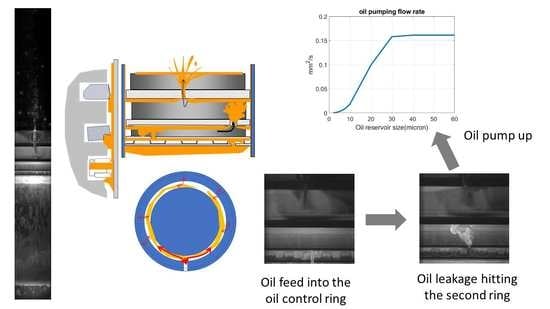Effect of Blowby on the Leakage of the Three-Piece Oil Control Ring and Subsequent Oil Transport in Upper Ring-Pack Regions in Internal Combustion Engines
Abstract
:1. Introduction
2. Experimental Setup
2.1. Engine Setup
2.2. Optical Setup
- full view as using 128 × 1024 resolution recording the whole optical window;
- magnified view with 1024 × 1024 resolution focused on a 12 × 12 mm square area at a set position.
| Camera Characters | |
|---|---|
| Sensor type | Proprietary Design Advanced CMOS |
| Maximum resolution | 1024 × 1024 pixels |
| Sensor size/ Diagonal | 20.48 × 20.48 mm/28.96 mm |
| Pixel size(microns) | 20 µm × 20 µm |
| Quantum efficiency | 46% at 630 nm |
| Fill factor | 58% |
| Color Matrix | Bayer CFA (single sensor) |
| ISO 12232 Ssat Sensitivity | ISO 25000 monochrome |
| Shutter | 1 ms to 1µs, independent of frame rate |
2.3. Test Procedure
3. Results and Discussion
3.1. Drastic Change in Oil Upward Flow When Blowby Reaches Zero
3.1.1. Time for Oil to Climb Up
3.1.2. Blowby Separation Line
3.2. Oil Accumulation in TPOCR
3.2.1. Dynamic Equilibrium Level
3.2.2. Oil Supply to the OCR Groove
Drain Holes
Lower Rail Gaps
3.2.3. Upper Rail Leaking
3.2.4. Importance of Rail Gap Location
- When the upper rail gap is rotated to the window area, it helps suck more oil into areas of the TPOCR groove between the two drain holes when the intake manifold pressure is below blowby separation line. On the contrary, the upper rail gap can help release more oil through the drain holes when the blowby is positive;
- the ring rotation is fast enough such that the effect of the upper rail gap remains before it comes back again.
3.2.5. Effect of Engine Speed
3.3. After Passing OCR: Pumping Effect
3.3.1. Hook Chamfer Design Result in Fully Flooded Pumping
3.3.2. Pumping Rate of the Second Ring
3.3.3. Pumping Rate of the Top Ring
3.4. Summary
4. Conclusions
- When the engine is running under the blowby separation line for a long enough time, such as with engine brakes in driving, overall reverse flow will gradually drive oil upwards and even oil droplets can be seen through the top ring gap. This will result in massive LOC and should be eliminated in engine operation;
- The oil inside the OCR groove can leak out from the upper rail gap. Low engine load and low engine speed can both introduce a higher oil accumulation level, which can result in more oil leakage. The alignment of both OCR rail gaps can result in more leakage than the situation when the gaps are far away from each other;
- The drain holes inside the OCR groove can act as oil supply holes. When running at zero blowby without a draining effect, the oil leakage jet from the upper rail gap can hit the second ring. This acts as the starting point of massive oil upwards pumping by filling the hook chamfer;
- The top two rings can pump the oil upwards through ring groove clearances at all the load conditions tested, provided there is sufficient oil supply to the boundaries of the ring/groove clearance. Therefore, the limiting factor for the ring/groove clearance to become an oil leaking path is the oil supply;
- It needs to be emphasized that different engines reach zero blowby at different levels of intake manifold pressure. Zero blowby rather than the magnitude of intake pressure as the threshold for drastic change of oil control bears more general implications. Furthermore, the findings in this work are applicable to not only different SI engines but also gas and hydrogen engines equipped with TPOCR.
Author Contributions
Funding
Institutional Review Board Statement
Informed Consent Statement
Data Availability Statement
Acknowledgments
Conflicts of Interest
References
- A Technical Summary of Euro 6/VI Vehicle Emission Standards. Available online: https://theicct.org/publication/a-technical-summary-of-euro-6-vi-vehicle-emission-standards/ (accessed on 1 July 2016).
- Uhlig, B.; Kirner, C.; Preuss, A.; Wachtmeister, G. Real-Time Measurement of the Piston Ring Gap Positions and Their Effect on Exhaust Engine Oil Emission; SAE International: Warrendale, PA, USA, 2018. [Google Scholar] [CrossRef]
- Adelmann, J.; Becker, S.; Rabute, R.; Bruno, R. Optimized oil control ring design for emission reduction. In Zylinderlaufbahn, Kolben, Pleuel; VDI Berichte: Baden-Baden, Germany, 2018; pp. 91–103. [Google Scholar]
- Thirouard, B.; Tian, T. Oil Transport in the Piston Ring Pack (Part I): Identification and Characterization of the Main Oil Transport Routes and Mechanisms; SAE International: Warrendale, PA, USA, 2003. [Google Scholar] [CrossRef]
- Thirouard, B.; Tian, T. Oil Transport in the Piston Ring Pack (Part II): Zone Analysis and Macro Oil Transport Model; SAE International: Warrendale, PA, USA, 2003. [Google Scholar] [CrossRef]
- Papadopoulos, I.; Becker, S.; Ehnis, H.; Kunzel, R.; Frommer, A. Influence of Oil Drain Holes on Oil Emission of a Turbocharged Gasoline Engine. SAE Int. J. Engines 2017, 10, 1948–1953. [Google Scholar] [CrossRef]
- Hasegawa, H.; Kikuhara, K.; Nishijima, S.; Suzuki, H.; Ito, A.; Sekiya, H.; Akamatsu, H. The Effect of the Position and Number of Oil Drain Hole on the Oil Pressure Generating under the Oil Ring with Relation to Oil Consumption. Trans. Soc. Automot. Eng. Jpn. 2017, 48, 59–64. [Google Scholar]
- Kikuhara, K.; Sekiya, H.; Ito, A.; Hayashi, H. A Numerical Analysis on the Effect of Several Factors on the Oil Pressure under Oil Control Ring Which Relates to Oil Consumption. Trans. Soc. Automot. Eng. Jpn. 2018, 49, 282–289. [Google Scholar]
- Yilmaz, E.; Thirouard, B.; Tian, T.; Wong, V.; Heywood, J.B.; Lee, N. Analysis of Oil Consumption Behavior during Ramp Transients in a Production Spark Ignition Engine; SAE International: Warrendale, PA, USA, 2001. [Google Scholar] [CrossRef]
- Przesmitzki, S.; Tian, T. Oil Transport Inside the Power Cylinder During Transient Load Changes; SAE International: Warrendale, PA, USA, 2007. [Google Scholar] [CrossRef]
- Przesmitzki, S.; Tian, T. An Experimental Study of the Time Scales and Controlling Factors Affecting Drastic Blow-by Increases during Transient Load Changes in SI Engines; SAE International: Warrendale, PA, USA, 2008. [Google Scholar] [CrossRef]
- Ahling, S.; Tian, T. Oil Transport Phenomena during Extreme Load Transients Inside the Power Cylinder Unit as Investigated by HS-2DLIF (High-Speed 2D Laser-Induced Fluorescence); SAE International: Warrendale, PA, USA, 2019. [Google Scholar] [CrossRef]
- Schäffer, J.; Kirner, C.; Härtl, M.; Wachtmeister, G. Development of a Measuring System for the Visualization of the Oil Film between the Piston and Cylinder Liner of a Gasoline Engine. SAE Int. J. Engines 2020, 13, 175–190. [Google Scholar] [CrossRef]
- Zhang, W. Modeling Internal Combustion Engine Three-Piece Oil Control Ring Coupling Reduced Order Oil Transport Based on Neural Network. Master’s Thesis, Massachusetts Institute of Technology, Cambridge, MA, USA, 2020. [Google Scholar]
- Mochizuki, K.; Sasaki, R.; Yazawa, M.; Iijima, N.; Usui, M. Prediction and Experimental Verification for Oil Transport Volume around Three-Piece Type Oil Control Ring Affecting Lubricating Oil Consumption; SAE International: Warrendale, PA, USA, 2022. [Google Scholar] [CrossRef]
- Zanghi, E. Analysis of Oil Flow Mechanisms in Internal Combustion Engines via High Speed Laser Induced Fluorescence (LIF) Spectroscopy. Master’s Thesis, Massachusetts Institute of Technology, Cambridge, MA, USA, 2014. [Google Scholar]
- Zanghi, E.; Tian, T. Development of a High Speed Laser Induced Fluorescence (HSLIF) System in a Single Cylinder Engine for Oil Transport Studies; SAE International: Warrendale, PA, USA, 2016. [Google Scholar] [CrossRef]
- Vokac, A.; Tian, T. An Experimental Study of Oil Transport on the Piston Third Land and the Effects of Piston and Ring Designs; SAE International: Warrendale, PA, USA, 2004. [Google Scholar] [CrossRef]
- Ahling, S. Elements of Lubricant Transport Critical to Piston Skirt Lubrication and to Leakage into the Piston Ring Pack in Internal Combustion Engines. Ph.D. Thesis, Massachusetts Institute of Technology, Cambridge, MA, USA, 2021. [Google Scholar]
- Froelund, K.; Menezes, L.; Johnson, H.; Rein, W. Real-Time Transient and Steady-State Measurement of Oil Consumption for Several Production SI-Engines; SAE International: Warrendale, PA, USA, 2001. [Google Scholar] [CrossRef]
- Tian, T. Modeling the Performance of the Piston Ring-Pack in Internal Combustion Engines. Ph.D. Thesis, Massachusetts Institute of Technology, Cambridge, MA, USA, 1997. [Google Scholar]
- Fang, T.; Meng, Z.; Ahling, S.; Tian, T. A Computational Study of the Lubricant Transport into Oil Control Ring Groove; SAE International: Warrendale, PA, USA, 2019. [Google Scholar] [CrossRef]
- Przesmitzki, S. Characterization of Oil Transport in the Power Cylinder of Internal Combustion Engines during Steady State and Transient Operation. Ph.D. Thesis, Massachusetts Institute of Technology, Cambridge, MA, USA, 2018. [Google Scholar]
- Fang, T. Computations and Modeling of Oil Transport between Piston Lands and Liner in Internal Combustion Engines. Ph.D. Thesis, Massachusetts Institute of Technology, Cambridge, MA, USA, 2018. [Google Scholar]




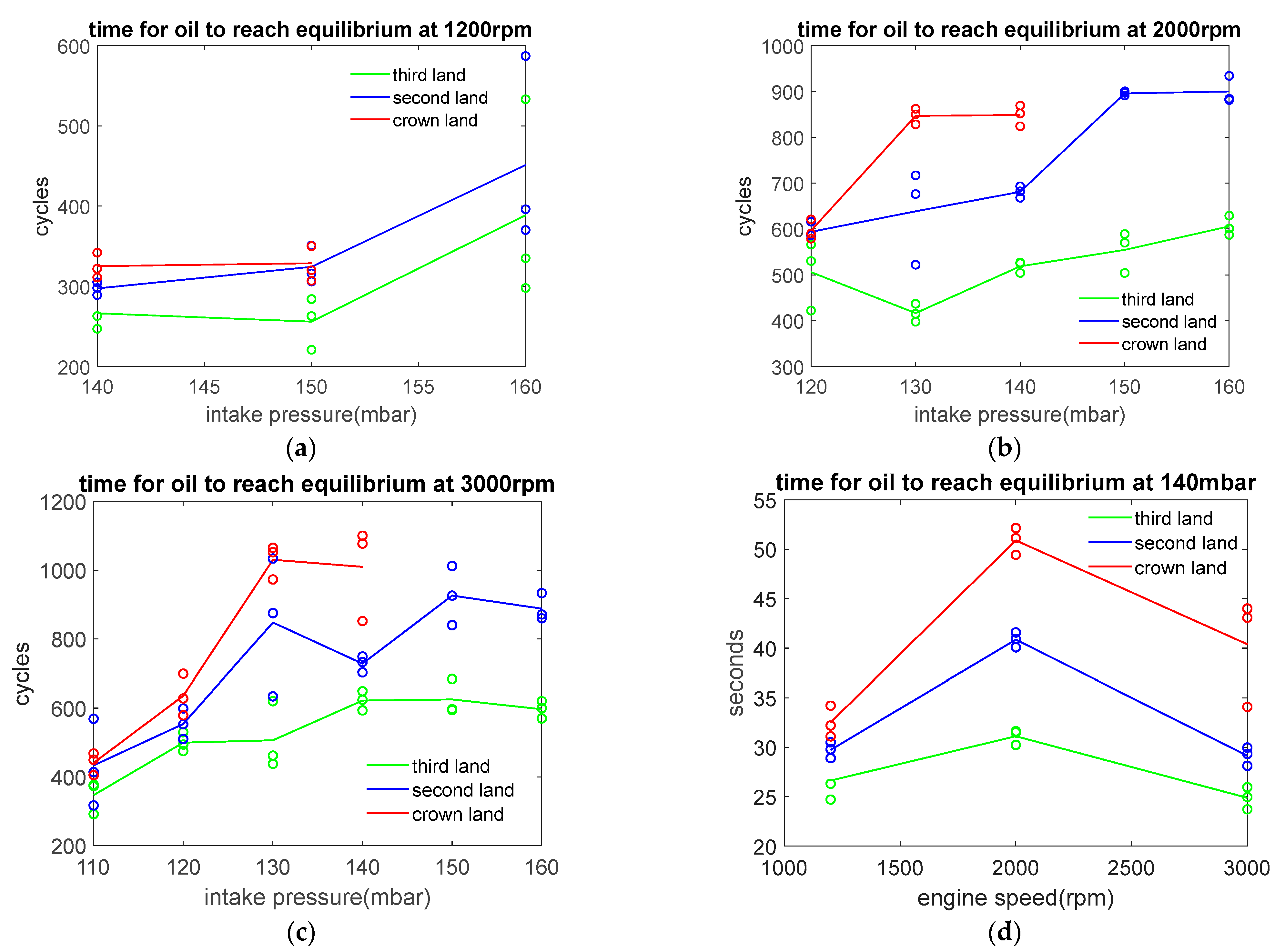
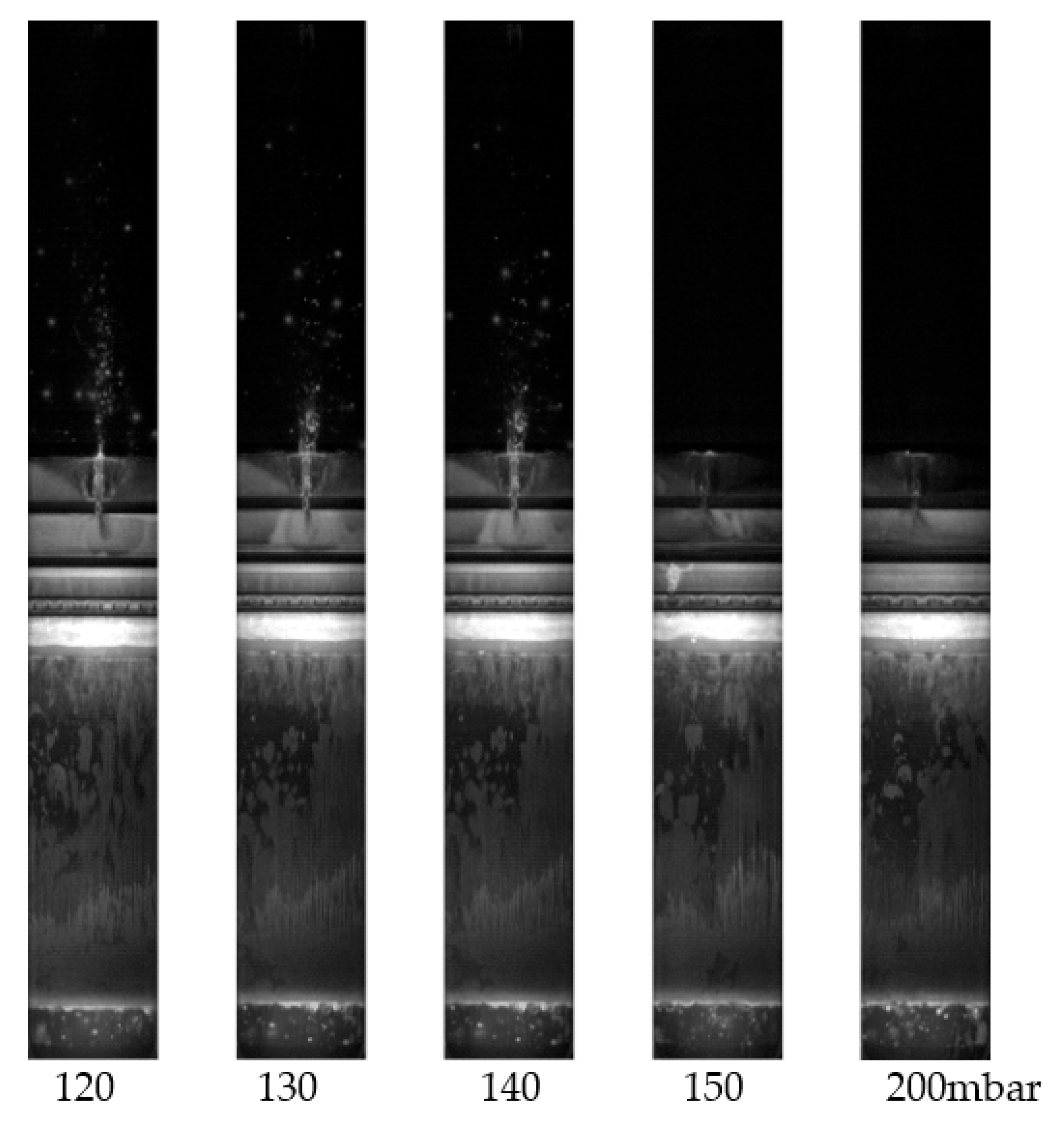

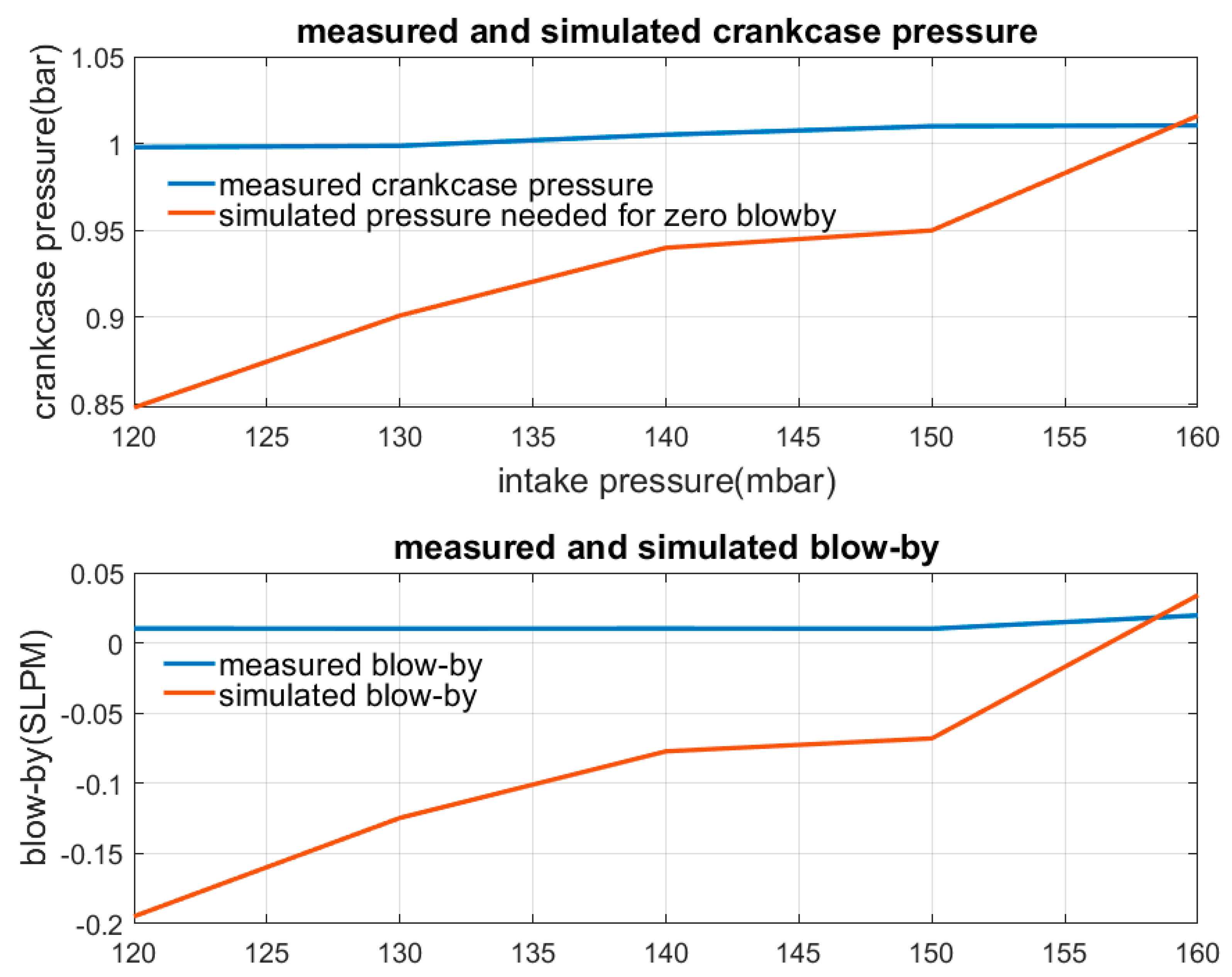
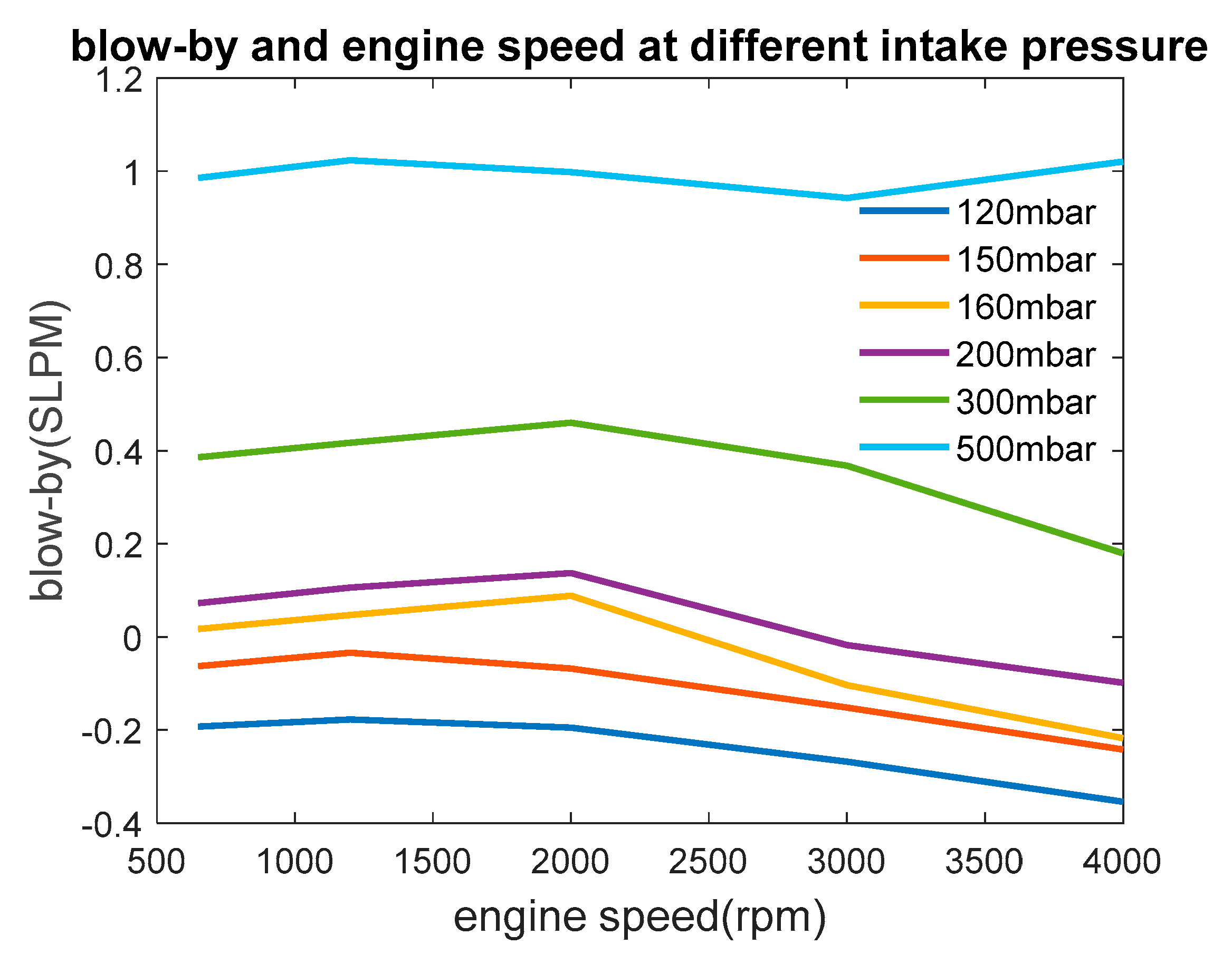

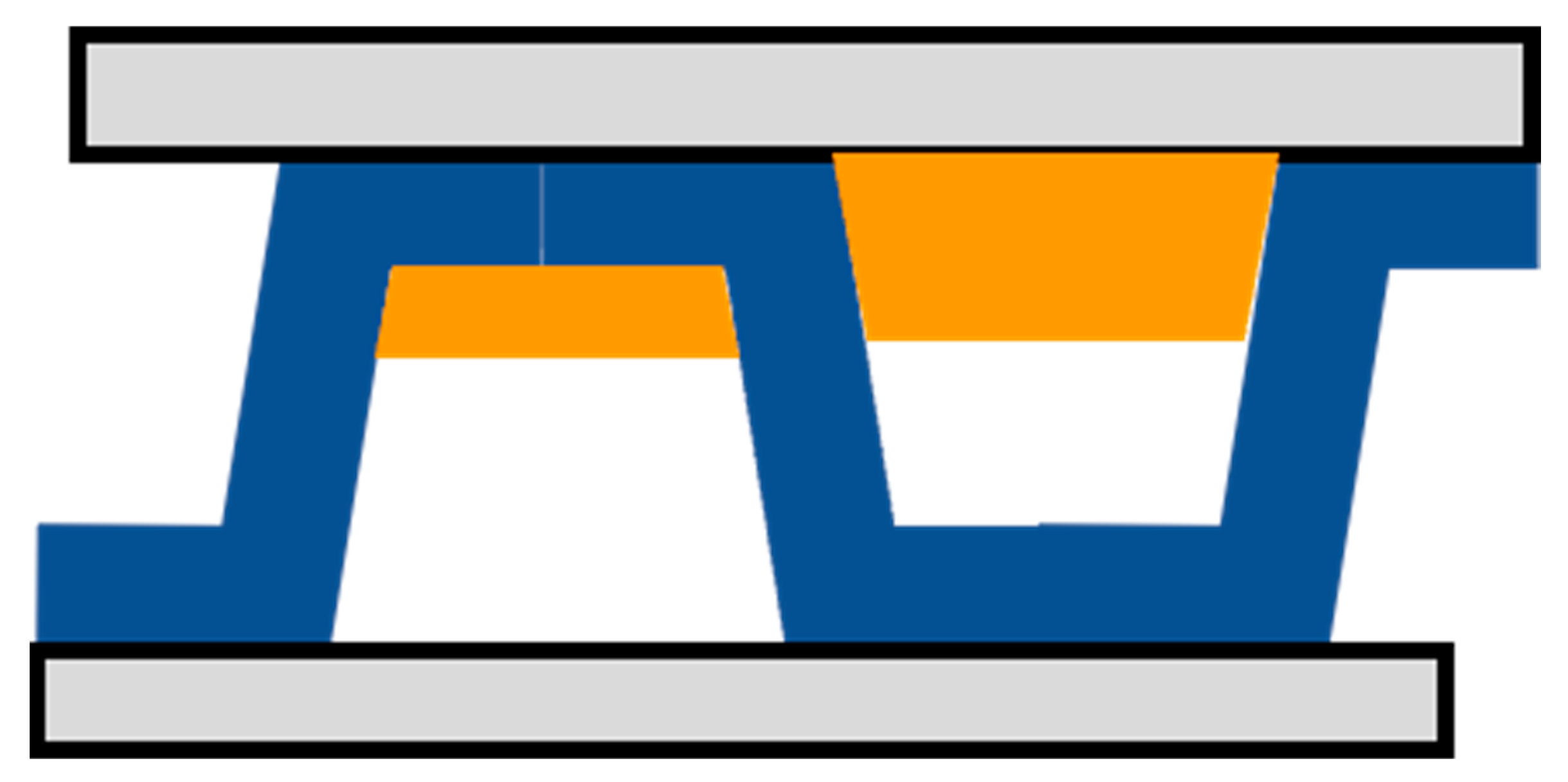
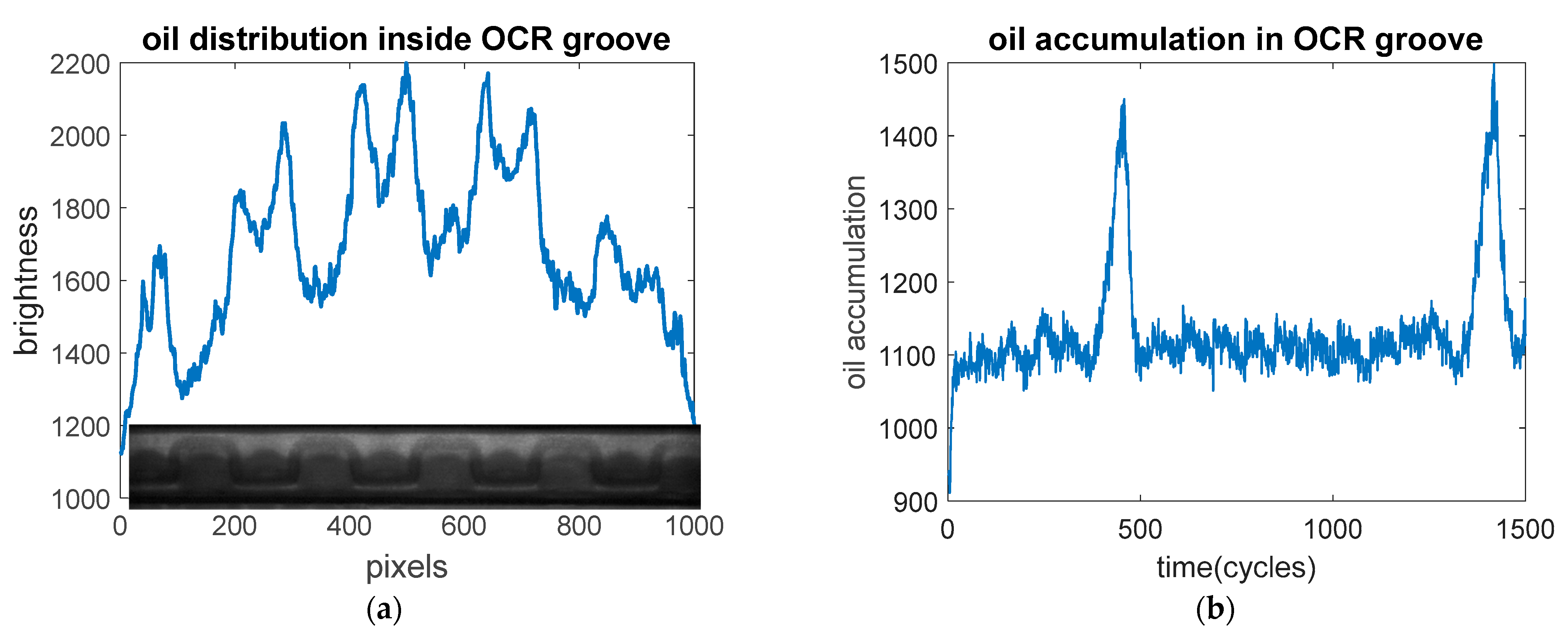
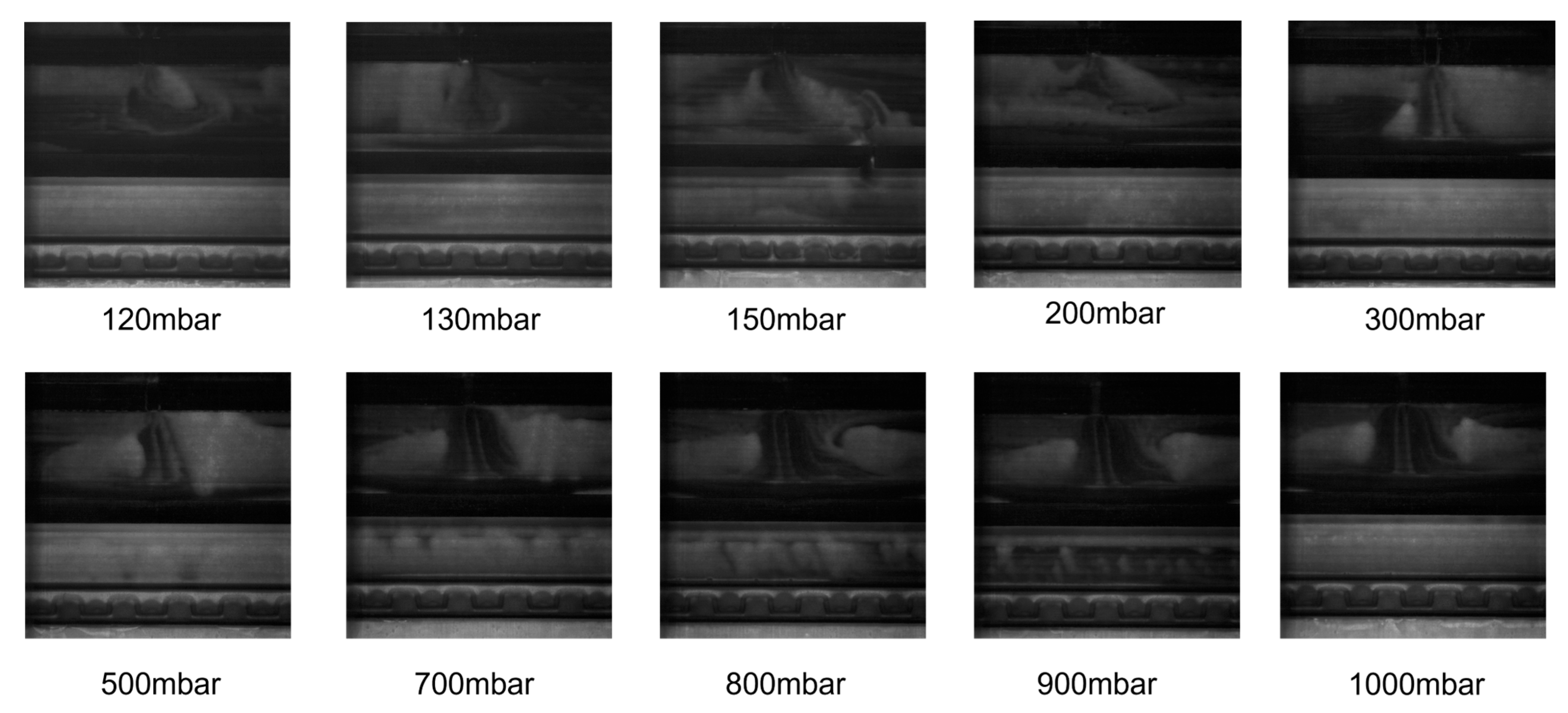


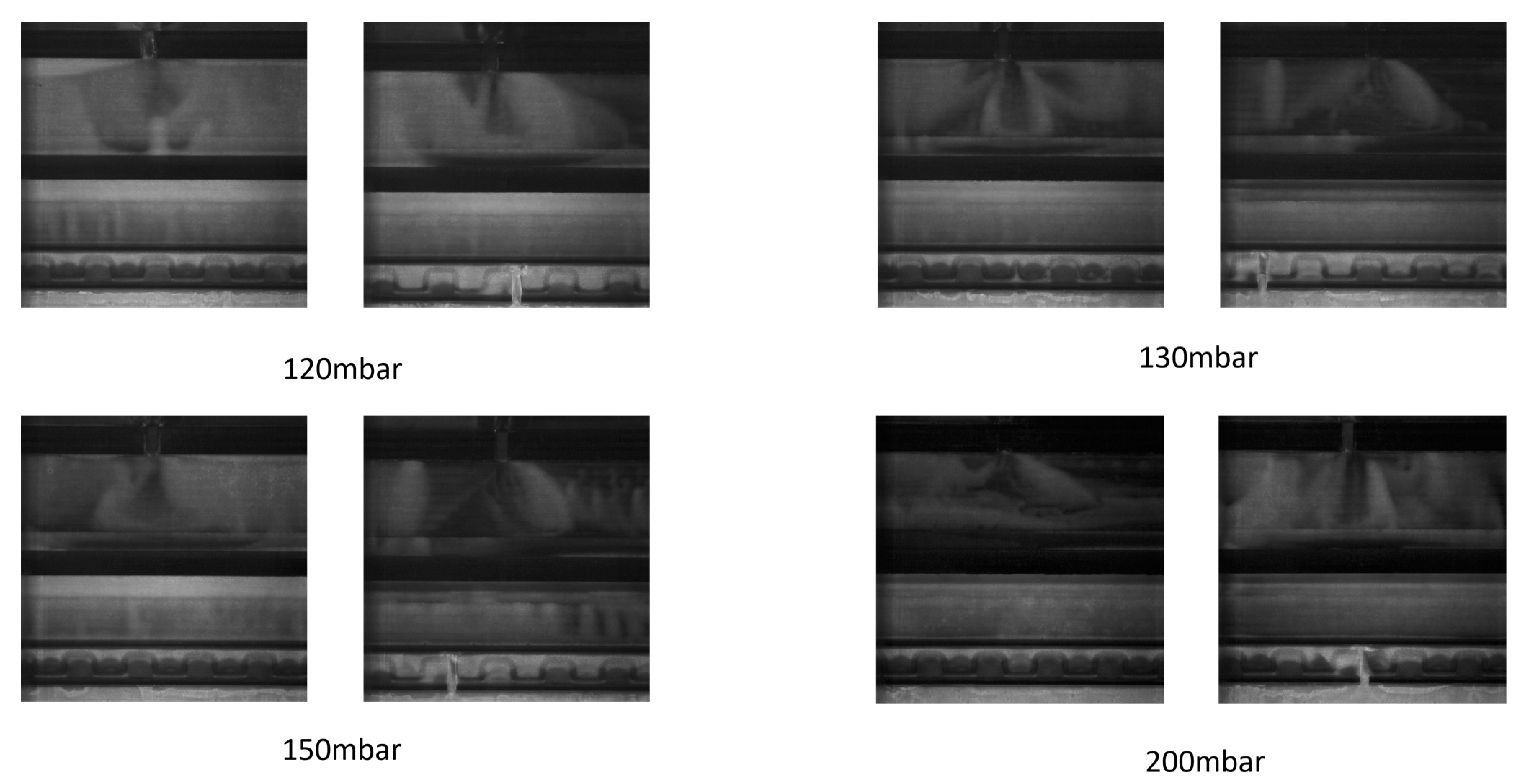
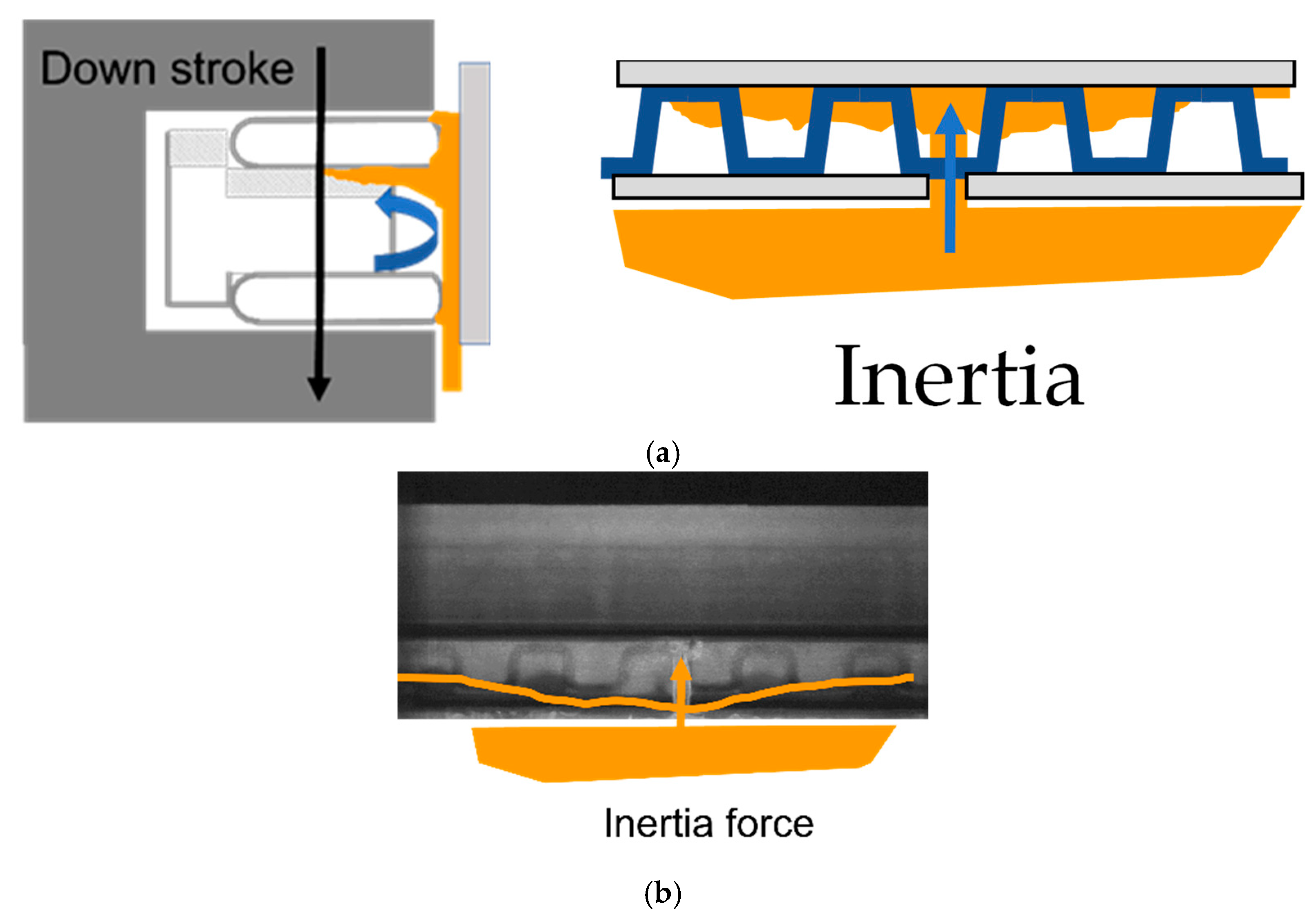
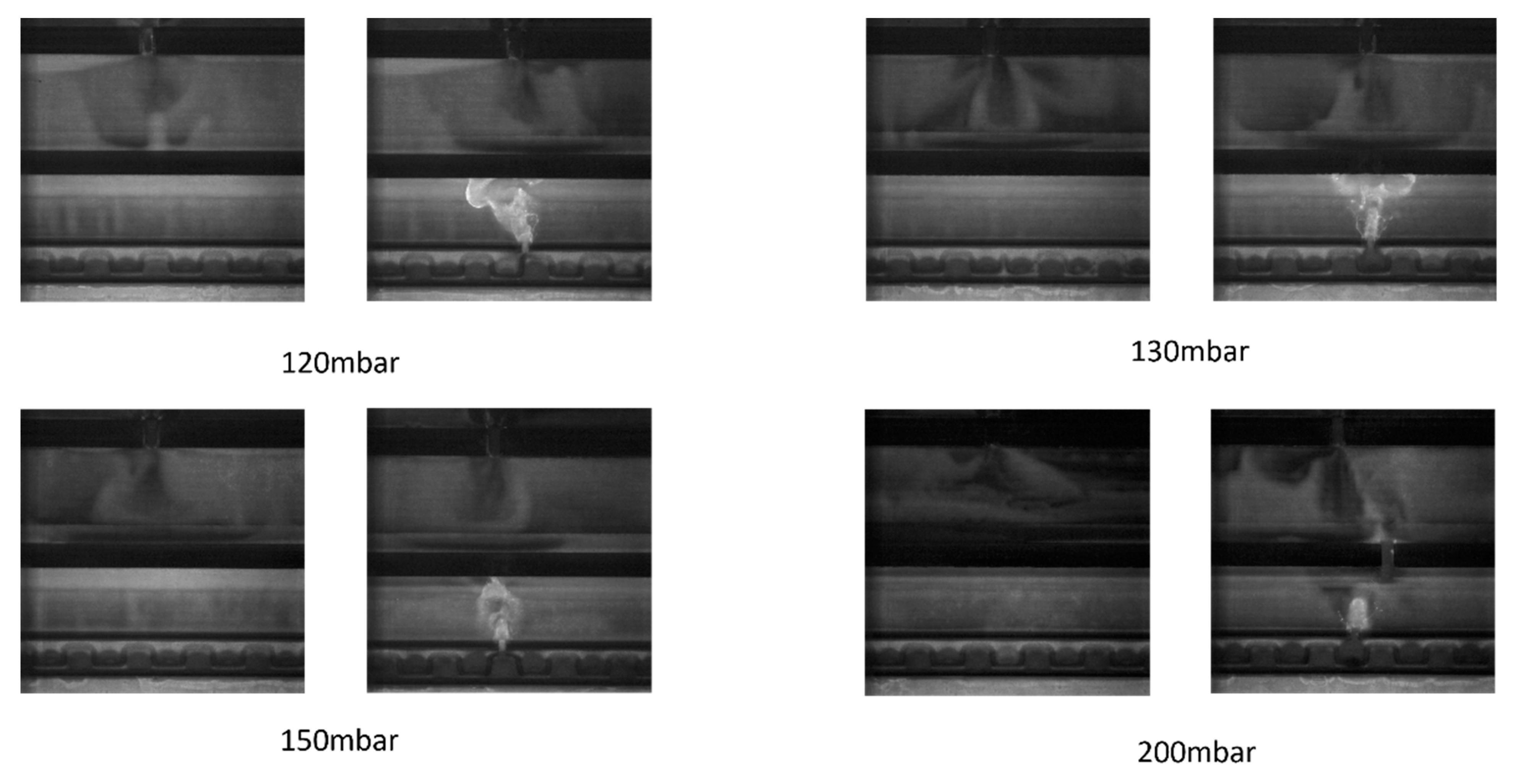
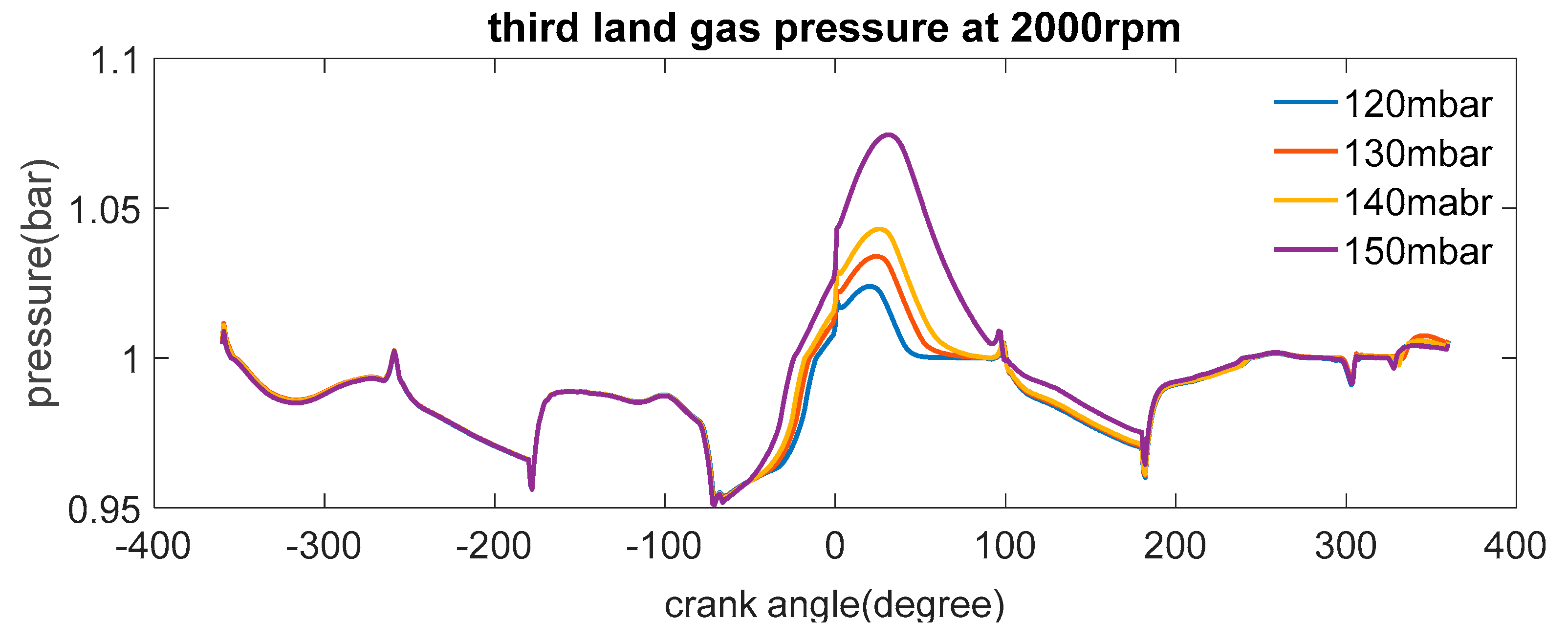
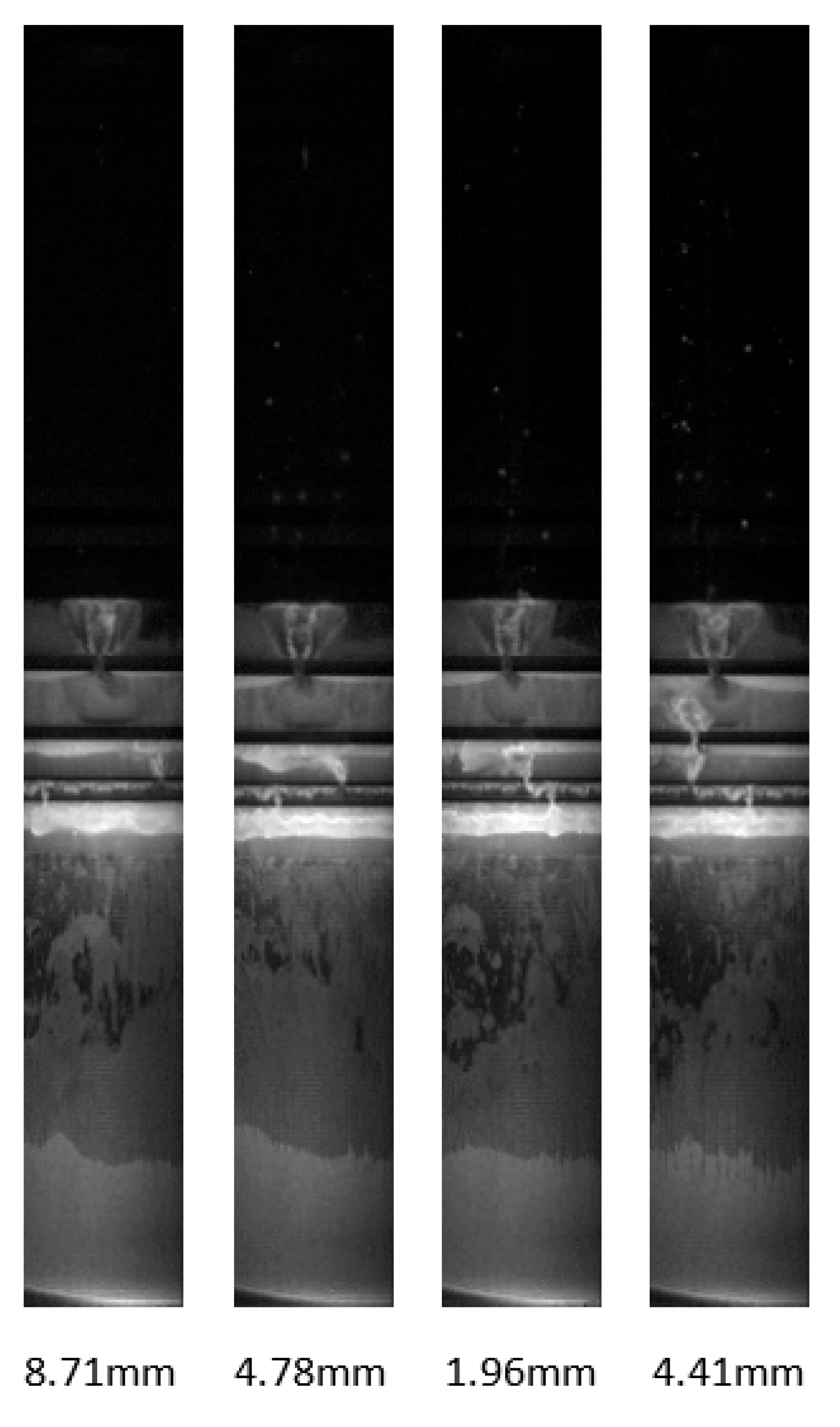


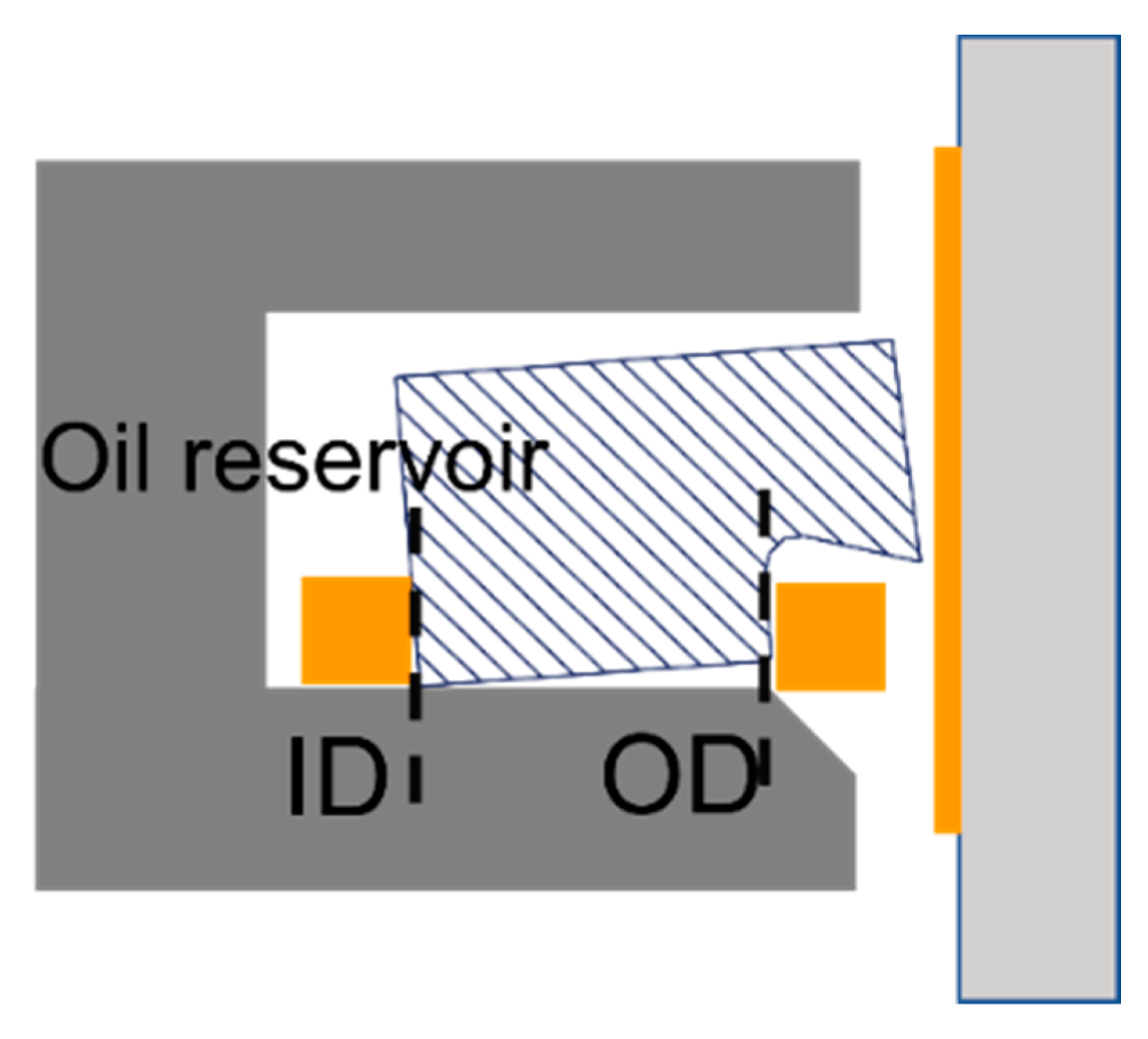
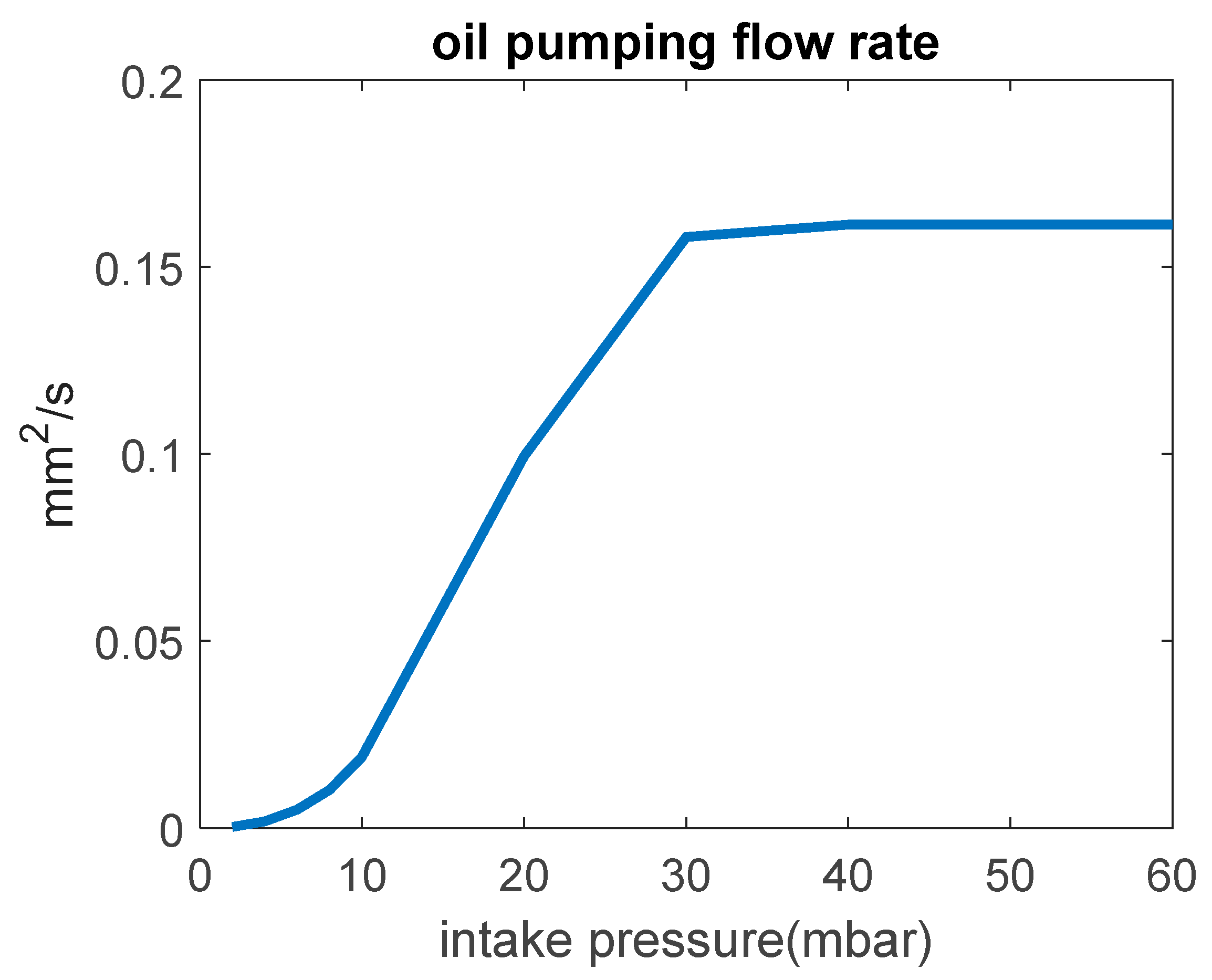
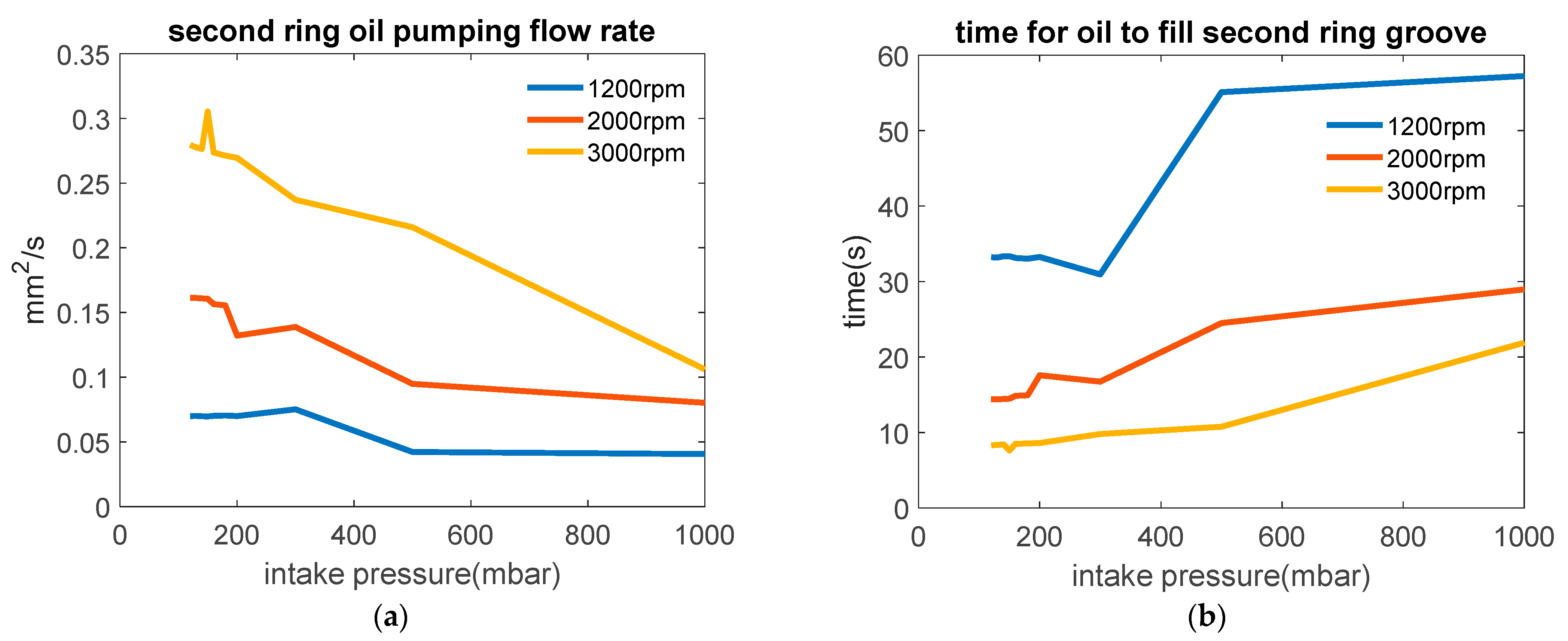
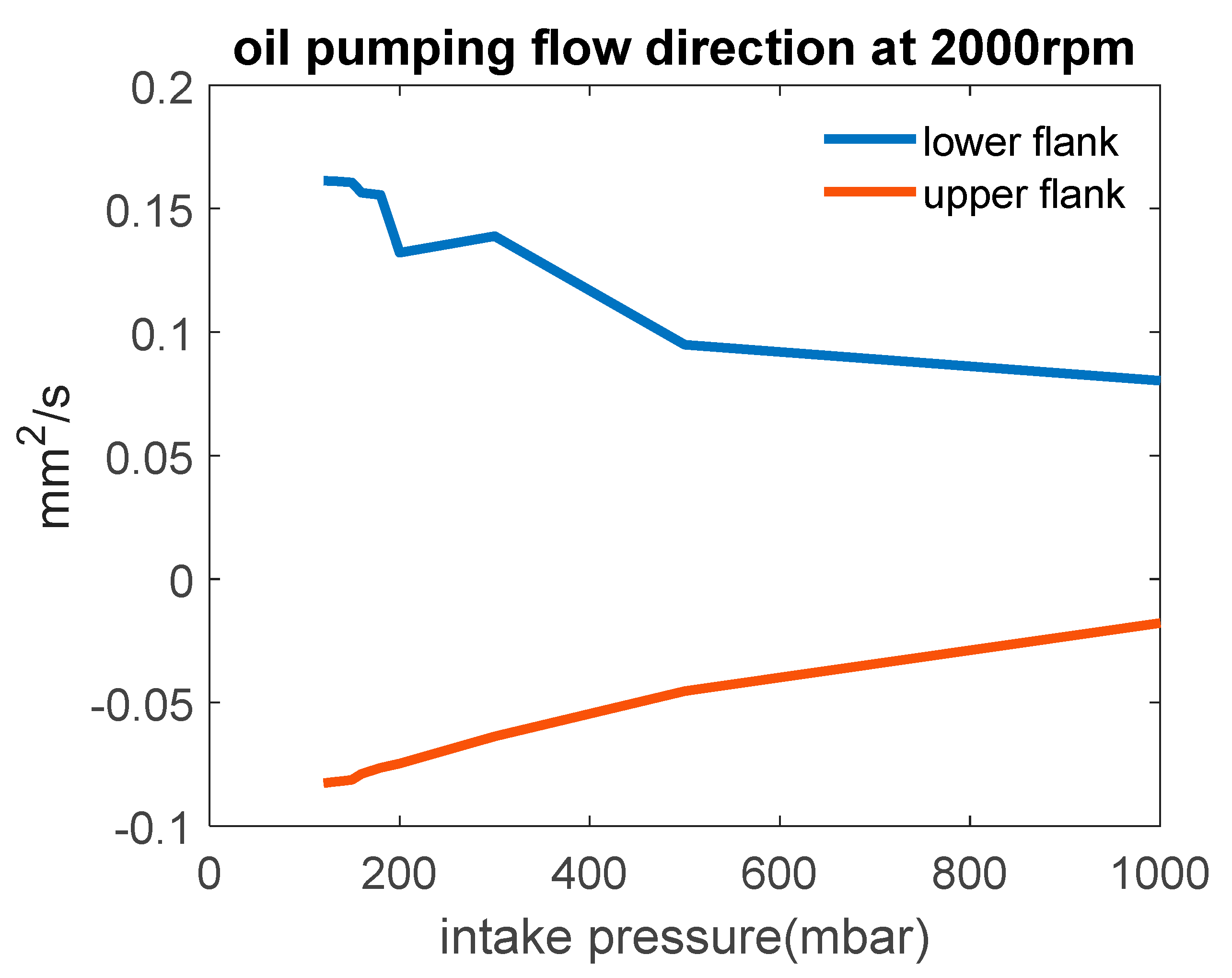
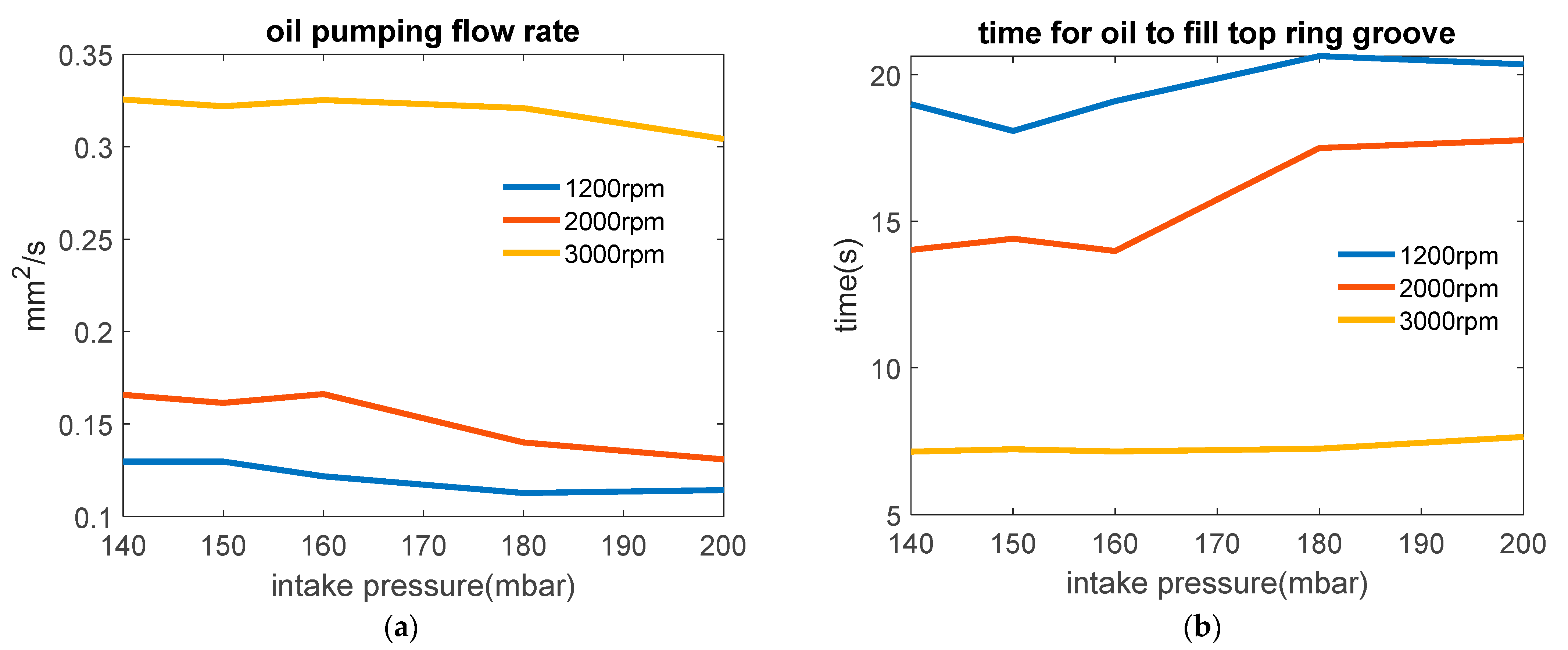
| Engine Characters | |
|---|---|
| Type | Spark Ignition 4 Valves |
| Bore | 86.6 mm |
| Stroke | 88.0 mm |
| Displacement | 0.511 L |
| Max specific power | 37.3 kW/L@5400 RPM |
| Max specific torque | 80 Nm/L@4200 RPM |
| Lubricant | SAE 0W20 |
Publisher’s Note: MDPI stays neutral with regard to jurisdictional claims in published maps and institutional affiliations. |
© 2022 by the authors. Licensee MDPI, Basel, Switzerland. This article is an open access article distributed under the terms and conditions of the Creative Commons Attribution (CC BY) license (https://creativecommons.org/licenses/by/4.0/).
Share and Cite
Li, M.; Tian, T. Effect of Blowby on the Leakage of the Three-Piece Oil Control Ring and Subsequent Oil Transport in Upper Ring-Pack Regions in Internal Combustion Engines. Lubricants 2022, 10, 250. https://doi.org/10.3390/lubricants10100250
Li M, Tian T. Effect of Blowby on the Leakage of the Three-Piece Oil Control Ring and Subsequent Oil Transport in Upper Ring-Pack Regions in Internal Combustion Engines. Lubricants. 2022; 10(10):250. https://doi.org/10.3390/lubricants10100250
Chicago/Turabian StyleLi, Mo, and Tian Tian. 2022. "Effect of Blowby on the Leakage of the Three-Piece Oil Control Ring and Subsequent Oil Transport in Upper Ring-Pack Regions in Internal Combustion Engines" Lubricants 10, no. 10: 250. https://doi.org/10.3390/lubricants10100250




